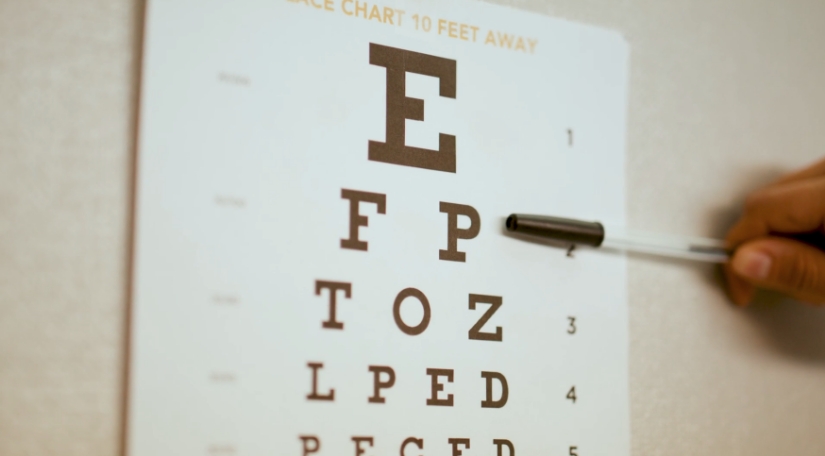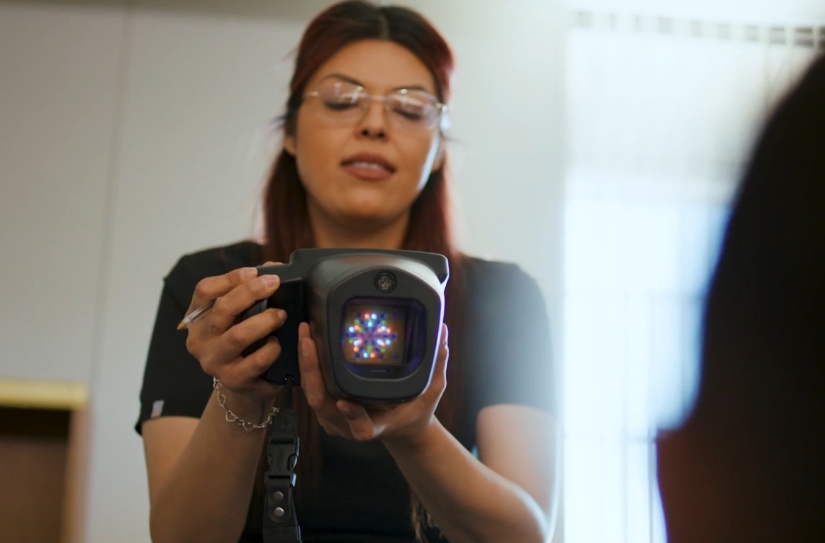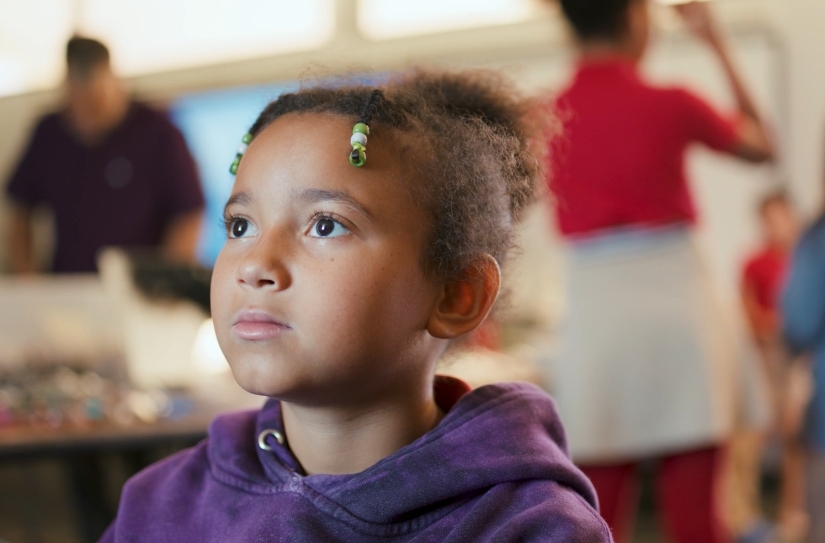
Vision Screening
Vision screening is a quick and effective way to check for potential vision problems. Children who don’t pass a vision screening are referred to an eye doctor for a complete eye exam.


Why is vision screening important?
Healthy vision is important for a child’s growth and learning. Uncorrected vision problems make it hard for young children to develop the literacy skills they need to learn to read and do well in school. Vision problems can also affect children’s social development and overall health.
Vision screening identifies children who may be at high risk for an eye problem and need a complete eye examination. Screening helps detect children’s vision problems at a young age, because the sooner problems are treated, the better. Some problems, like amblyopia (also called “lazy eye”), can cause permanent vision loss if not caught and treated early.
Children who fail a vision screening are referred to an eye doctor for a full, professional eye exam to determine if they have a vision problem that needs treatment such as glasses, eye drops, or other options to achieve their best vision health.
When should children receive vision screening?
Children should receive vision screening:
- For the first time as early as age 1 during a regular well-child visit with a doctor or healthcare provider.
- At least once between 3-5 years old by their primary healthcare provider or a trained screener.
- Every year in kindergarten through fourth grade and every other year after that. Vision screenings in schools are intended to supplement regular screenings provided by healthcare providers.

Where can children get vision screening?
Vision screenings can be performed by healthcare providers, school nurses, and trained program staff or volunteers in community settings.
Healthcare providers
Vision screenings should be included as part of your child’s regular well-child visits with their pediatrician or in other health care settings, but you can request a vision screening at any time, especially if you think your child might have a vision problem. Vision screenings in healthcare offices are usually provided by a medical assistant or nurse.
Schools
All Arizona public and charter schools are now required to provide vision screenings for enrolled children at school entry (pre-K or kindergarten), in third grade, and again in seventh grade. Schools may also choose to screen children in other grades. Vision screenings in schools are usually administered by a school nurse, health assistant, or trained volunteer.
Head Start, preschool, child care, and home visiting programs
Early childhood vision screenings may be offered at your child’s preschool or child care program. If your child is enrolled in Head Start programs, they must receive a vision screening, either by a healthcare provider or by the Head Start program staff. Many home visitation programs also provide vision screening.
Community settings
Vision screenings may be provided at local libraries, health fairs, or other community events. You can also visit Arizona Lions Vision and Hearing Foundation or Eye Care 4 Kids Arizona for more vision screening opportunities.
What is included in children’s vision screening?
Vision screening checks the appearance of the eye and looks for signs and behaviors that may indicate an eye problem. Screening assesses a child’s ability to track objects and see far and near, colors, and depth. Depending on the child’s age and vision needs, screenings may use different techniques and tools.
1-2 years old
Vision screening for children ages 2 and younger is typically done by healthcare providers. They will ask about your child’s health history and behavior, such as rubbing their eyes, any redness or unusual crusting in the eye area, or complaints of eyes or head pain. The provider will examine your child’s eyes and check your child’s ability to track an object. They may also look into your child’s eyes using a special lighted instrument called an ophthalmoscope. Some may use special vision screening instruments called photoscreeners or autorefractors. A photoscreener or autorefractor uses light to take a picture of your child’s eyes. These vision screening instruments can be used on children as young as age 1.


3-5 years old
Children ages 3-5 years get vision screenings using charts to measure their visual acuity (how well they can see). Charts that are appropriate for young children have either shapes that look like a square, circle, house and apple, or letters (H, O, T, and V). Your child will be asked to stand at a distance from the chart and read the shapes or letters aloud. Each eye should be tested separately by covering one eye at a time using a patch or specially blacked out pair of glasses.
Many children younger than age 5 are not able or willing to cooperate in a vision screening with charts. In these cases, vision screening can be done using special vision screening instruments called photoscreeners or autorefractors. A photoscreener or autorefractor uses light to take a picture of a child’s eyes and tells a lot about the health of his/her eyes. These vision screening instruments can be used on children as young as 12 months, but they don’t measure how well a child sees, so it’s important to use a chart with shapes or letters for your child’s vision screenings as soon as they are old enough to cooperate.
6 years and older
Children ages 6 and older who know letters in the alphabet can usually be vision screened using charts with letters on them. These charts measure a child’s visual acuity (20/20 vision or 20/40 vision, for example). The screening should also use other charts or pictures to measure how well your child sees color and depth.

Children with certain developmental delays
Vision screening is not necessary for children with certain developmental delays that cause difficulties with language and speech, motor skills, behavior, memory, learning, or other neurological functions. Instead, eye doctors recommend that all children with these types of delays receive a comprehensive eye exam.
Insurance
- Vision screening in many community settings, including schools and child care programs, may be offered for free.
- Vision screening and other children’s vision services offered by healthcare providers, including eye exams and treatment, are covered on most private insurance plans, and many are free. Check with your insurance plan for information.
- Vision screening is covered for every child under age 21 by AHCCCS (Medicaid).
- Vision screening is also covered for children under age 19 by KidsCare.
Learn more about the vision services commonly included in most children’s health insurance plans and programs that may be able to help families without health insurance or in need of financial help.